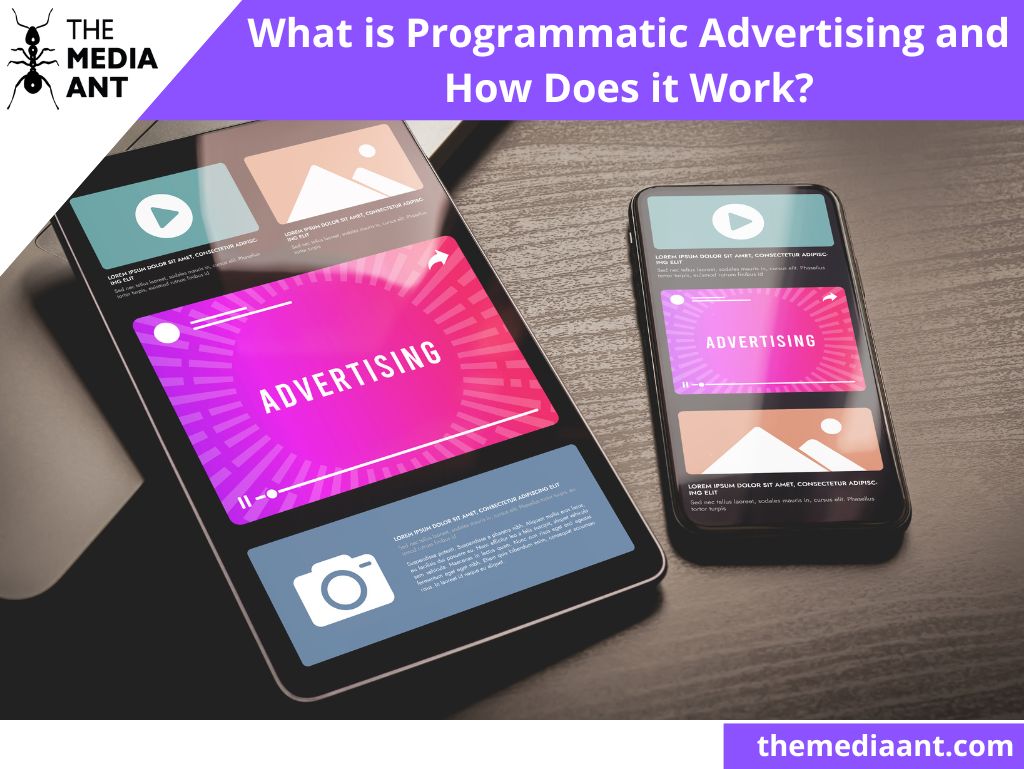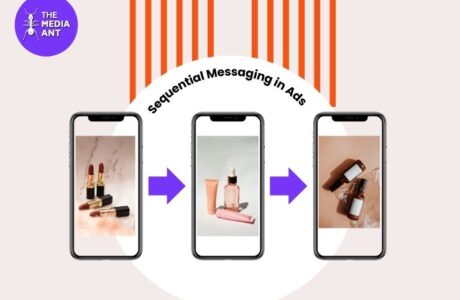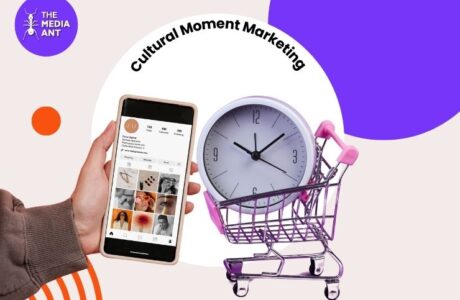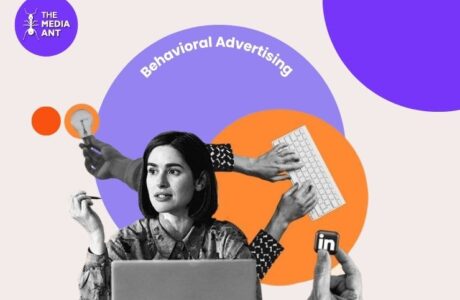The digital landscape is ever-evolving, and with it, the methods marketers use to reach their target audiences. One such method that has taken the advertising world by storm is programmatic advertising. But what’s all the fuss about? Let’s dive in!
Programmatic Advertising Definition
Programmatic advertising is the automated buying and selling of online ad space using technology. Instead of traditional human negotiations and manual ad placements, programmatic software uses algorithms to purchase digital ads. It’s like having a robot do your shopping but for ads!
Real-time Bidding vs. Programmatic Direct
While many use the terms interchangeably, there’s a difference. Real-time bidding (RTB) is a type of programmatic buying where ad inventory is bought and sold on a per-impression basis, in real-time. On the other hand, programmatic direct involves purchasing guaranteed ad impressions in advance from specific publisher sites.
Benefits of Programmatic Advertising
1. Precision and Efficiency
Programmatic advertising stands out as a game-changer in the digital marketing realm, primarily due to its unparalleled precision. Traditional advertising methods often involve a scattergun approach, hoping to reach the desired audience. In contrast, programmatic advertising is like a sniper’s aim, targeting specific demographics, behaviors, and contexts.
How does it achieve this? The answer lies in data. Today’s consumers leave digital footprints everywhere, from the websites they visit to the products they search for. Programmatic platforms harness this data, allowing advertisers to craft campaigns tailored to individual preferences. This means that a brand can ensure its ad for running shoes is seen by a fitness enthusiast rather than someone with no interest in sports. The result? A significant reduction in wasted impressions and a notable increase in return on investment (ROI).
2. Real-time Analytics and Feedback
In the past, advertisers would launch a campaign and wait, often with bated breath, to see if it resonated with the audience. This approach was akin to sailing a ship without a compass. Enter programmatic advertising, and the scenario changes dramatically.
Programmatic platforms offer real-time analytics, providing advertisers with a continuous stream of data about how their campaigns are performing. This includes metrics like click-through rates, conversion rates, and more. But why is this instantaneous feedback crucial?
For starters, it allows for agile marketing. If an ad isn’t performing as expected, advertisers can tweak it in real time, ensuring resources aren’t wasted on ineffective campaigns. Moreover, this continuous feedback loop offers valuable insights into audience preferences, helping brands refine their future marketing strategies. In essence, programmatic advertising ensures that brands are always in tune with their audience’s pulse.
3. Cost-Effectiveness
At first, glance, investing in programmatic advertising technology might seem like an added expense. However, when we delve deeper, the cost benefits become evident.
Firstly, automation means efficiency. Manual processes, like negotiations and placements, are time-consuming and often lead to higher overheads. Programmatic advertising automates these processes, ensuring faster placements and reducing the need for large advertising teams.
Furthermore, the precision we discussed earlier directly impacts cost-effectiveness. By ensuring ads reach the right audience, brands can get a higher return on every dollar spent. Think of it this way: instead of buying a billboard that everyone passes by, brands can now purchase a digital billboard that only their target audience sees. This targeted approach ensures that ad budgets are utilized optimally, leading to better results without inflating costs.
In conclusion, programmatic advertising isn’t just a buzzword. It’s a powerful tool that offers precision, real-time insights, and cost benefits, making it indispensable in today’s digital-first world.
Challenges in Programmatic Advertising
1. Transparency Issues
One of the main criticisms of programmatic advertising is the lack of transparency. With multiple intermediaries involved, it’s sometimes unclear where ad spending is going and how it’s being used.
2. Ad Fraud Concerns
Digital ad fraud is a growing concern. Bots and fraudulent publishers can inflate impressions, leading to wasted ad spend.
3. Data Privacy and Security
With data being a cornerstone of programmatic advertising, ensuring user data privacy and security is paramount. Advertisers need to be wary of regulations like GDPR and ensure they’re compliant.
The Future of Programmatic Advertising
1. AI and Machine Learning Integration
In-depth Analysis: AI and machine learning have the capability to sift through massive datasets at speeds incomprehensible to humans. This means that advertisers can gain insights from consumer behavior, preferences, and trends in real time.
Predictive Analytics: One of the most significant advantages of AI in programmatic advertising is its ability to predict future trends based on historical data. This can help advertisers anticipate consumer needs and tailor their campaigns accordingly.
Real-time Optimization: Machine learning algorithms can continuously learn from new data. This means that as a campaign progresses, the algorithm can adjust the targeting parameters, bid amounts, and even creative elements to ensure maximum ROI.
Personalization: With AI, ads can be tailored to individual users based on their behavior, interests, and online activities. This level of personalization can lead to higher engagement rates and better conversion.
2. Expanding Beyond Display Ads
Video: As consumers spend more time on video platforms like YouTube, Instagram, and streaming services, programmatic advertising in video content is becoming increasingly prevalent. AI can help in segmenting audiences and ensuring that video ads are shown to the most relevant audience.
Audio: With the rise of platforms like Spotify and podcast services, programmatic audio advertising is gaining traction. This allows advertisers to target users based on their listening habits, genres, and moods.
Television: Traditional TV is undergoing a transformation with the rise of connected TVs and OTT platforms. Programmatic advertising is making its way into this space, allowing for more targeted and personalized ad experiences for viewers.
3. The Role of 5G
Faster Data Processing: 5G, with its lightning-fast speeds, will enable quicker data transfer and processing. This means that real-time bidding, which is at the heart of programmatic advertising, will become even more instantaneous.
Enhanced User Experience: Faster internet speeds will lead to reduced buffering and loading times, ensuring that ads (especially video and interactive ads) are displayed seamlessly, leading to better user engagement.
Innovative Ad Formats: With the capabilities of 5G, we can expect the emergence of new, immersive ad formats. Think augmented reality (AR) ads, virtual reality (VR) experiences, and interactive 3D ads that can engage users in novel ways.
IoT and Programmatic: 5G will also accelerate the growth of the Internet of Things (IoT). This means that devices, from smart fridges to wearables, could become new platforms for programmatic advertising, offering unique opportunities for contextual and timely ads.
How to Get Started with Programmatic Advertising
1. Choosing the Right Platform
Starting with the right platform is crucial. Research and choose a platform that aligns with your goals and offers transparency and robust analytics.
2. Setting Clear Objectives
Before diving in, set clear, measurable objectives. What do you hope to achieve with your programmatic advertising campaigns?
3. Monitoring and Adjusting Campaigns
Stay on top of your campaigns. Monitor performance, gather insights, and don’t be afraid to tweak and adjust for better results.
Real-life Case Studies
A. Success Stories
1. Coca-Cola
One of the world’s most recognizable brands, Coca-Cola, has always been at the forefront of advertising innovations. With programmatic advertising, they took their marketing game to another level. In a campaign aimed at promoting their Diet Coke product, Coca-Cola used programmatic advertising to target specific audience segments with personalized messages. By analyzing real-time data, they identified micro-moments when their target audience was most likely to engage with their content. The result? A significant boost in engagement rates and a notable increase in sales for Diet Coke. This campaign showcased the power of programmatic advertising in delivering the right message to the right audience at the right time.
2. Procter & Gamble (P&G)
P&G, a multinational consumer goods corporation, has a vast array of products under its belt. To promote its products effectively to diverse audience segments, P&G turned to programmatic advertising. In one of its campaigns for a skincare product, P&G used programmatic platforms to target women aged 25-40 who had shown interest in skincare products in the past. By leveraging data-driven insights, P&G ensured that their ads reached women who were most likely to be interested in their product. The outcome? A surge in product sales and a commendable ROI, proving once again the efficacy of programmatic advertising.
B. Lessons from Failures
While success stories inspire, failures often provide the most valuable lessons. In the realm of programmatic advertising, not all campaigns achieve their desired outcomes. Here are some common pitfalls and the lessons they offer:
1. Lack of Clear Objectives
A tech company, hoping to leverage programmatic advertising, launched a campaign without setting clear objectives. The result was a scattered approach, with ads reaching a broad audience but failing to engage any specific segment effectively. The lesson? Always start with a clear goal in mind. Whether it’s brand awareness, lead generation, or sales conversion, having a defined objective ensures that the campaign stays on track.
2. Neglecting to Monitor Campaigns
An e-commerce brand, excited about the prospects of programmatic advertising, set up a campaign and then took a hands-off approach, failing to monitor its performance. Over time, the campaign began to underperform due to changing audience behaviors and market dynamics. By the time the brand realized the dip in performance, they had already wasted significant ad spend. The lesson? Programmatic advertising is dynamic. Continuous monitoring and real-time adjustments are crucial to ensure sustained success.
3. Over-reliance on Automation
A fashion retailer, new to programmatic advertising, relied heavily on automation without incorporating human judgment. While automation optimized the ad placements, the content of the ads failed to resonate with the audience due to cultural nuances. The lesson? While programmatic advertising offers automation, the human touch is irreplaceable. Understanding cultural and emotional nuances ensures that ads don’t just reach the audience but also resonate with them.
Conclusion
Programmatic advertising is undeniably reshaping the advertising landscape. With its efficiency, precision, and real-time analytics, it offers advertisers a powerful tool to reach their audiences. As technology continues to evolve, so will programmatic advertising, promising even more exciting opportunities for the future.
FAQs on Programmatic Advertising?
What is the main advantage of programmatic advertising?
The primary advantage is efficiency and precision. Advertisers can target specific audiences, ensuring their ads are seen by the right people, leading to better ROI.
How does real-time bidding work?
RTB is an auction-based system where ad impressions are sold and bought in real-time, often in the time it takes a webpage to load.
Is programmatic advertising expensive?
While there’s an initial investment in technology, the precision and efficiency of programmatic advertising can lead to cost savings in the long run.
How do I ensure data privacy in my campaigns?
Stay updated with regulations like GDPR, and always be transparent with users about how their data is being used.
What’s the difference between programmatic and traditional advertising?
Traditional advertising involves manual processes and negotiations, while programmatic automates the ad-buying process using technology.
Can I use programmatic advertising for video campaigns?
Absolutely! While it started with display ads, programmatic advertising now encompasses various formats, including video.





